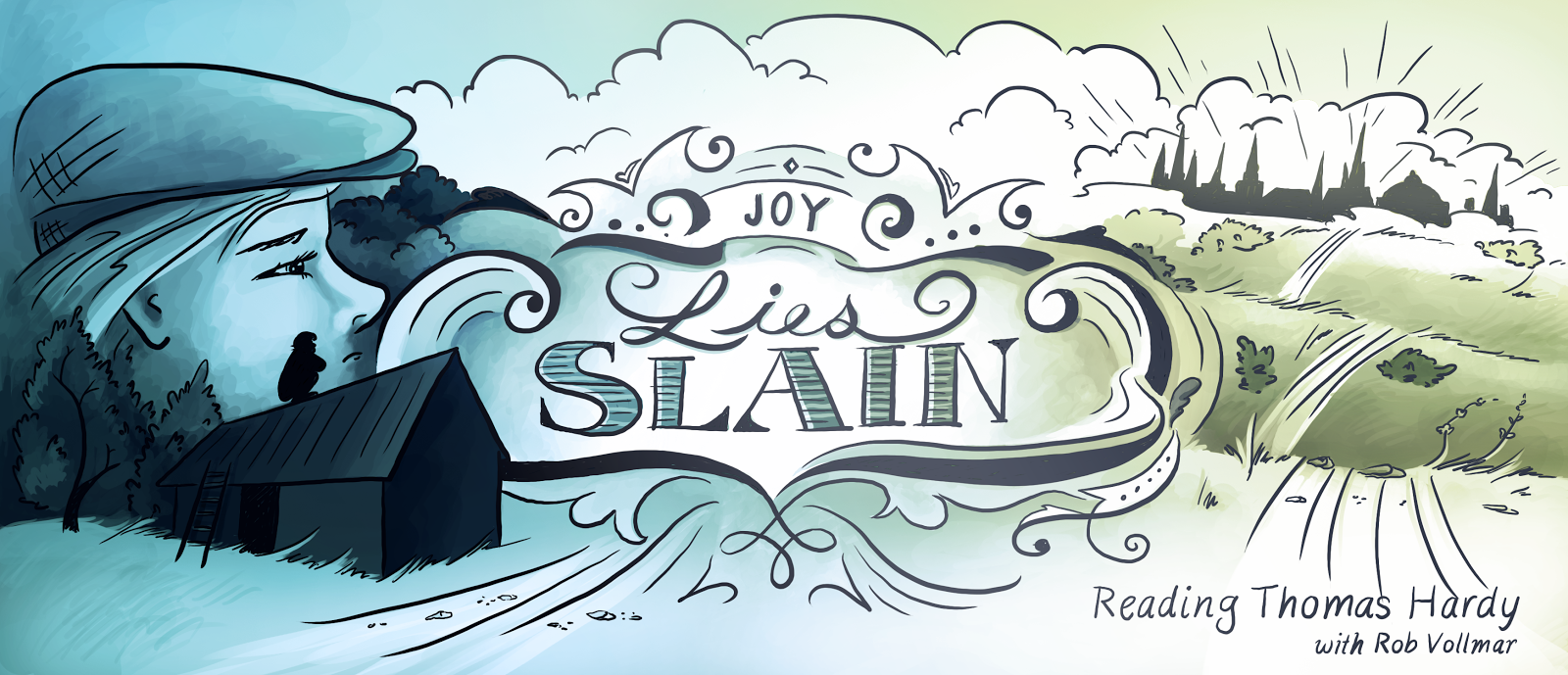 |
| Bronze statue of William Barnes outside the Church of St Peter on High Street in Dorchester, UK. Photo by Elliott Brown. |
The idea of textually representing Dorset through dialect didn't originate with Hardy. The poet William Barnes began writing poetry in the region's dialect in the 1820s and is the originator of the conceit of referring to Dorset as Wessex; both, ideas for which Hardy is better known. It is no exaggeration to say that without William Barnes, there would have been no Thomas Hardy as we know him. He was, by all indicators, a genius and a polymath.
By the time Hardy would have known him by something other than reputation, Barnes had taken an official position in the Church of England. The pair appeared to establish an acquaintance when Barnes moved the school of which he was the headmaster next door to the office of John Hicks, for whom a young Thomas Hardy was apprenticing. Given what we know of Hardy's impressionable personality as a youth, it's hard to imagine that meeting a published poet with a profound interest in the peculiarities of the Dorset dialect didn't put ideas in his head about his own literary future.
Barnes's approach to approximating the Dorset speech is very different than Hardy's own solutions in Under the Greenwood Tree. The former's interest in philology and rendering the sound of the dialect (not unlike Robert Burns) transforms his poetry into almost a formal academic experiment.
The Fall by William Barnes
The length o’ days ageän do shrink
An’ flowers be thin in meäd, among
The eegrass a-sheenèn bright, along
Brook upon brook, an’ brink by brink.
Noo starlèns do rise in vlock on wing—
Noo goocoo in nest-green leaves do sound—
Noo swallows be now a-wheelèn round—
Dip after dip, an’ swing by swing.
The wheat that did leätely rustle thick
Is now up in mows that still be new,
An’ yollow bevore the sky o’ blue—
Tip after tip, an’ rick by rick.
While now I can walk a dusty mile
I’ll teäke me a day, while days be clear,
To vind a vew friends that still be dear,
Feäce after feäce, an’ smile by smile.
Barnes uses language here in some specific ways to evoke the Dorset dialect. The first is a certain freedom in spelling to emphasize its peculiar sounds that extends to the application of diacriticals to indicate dipthongs that occur naturally in speech but can be masked by text. "F''s also regularly transform into 'v''s ("vlock on wing," "bevore the sky," "(t)o vind a vew friends"). Although not demonstrated here, Barnes was also inclined to turn some 's' sounds into 'z's as in this line from his poem, "Zun-zet": "Sorrow-slightèn, work-vorgettèn, / Gambol’d wi’ the zun a-zettèn." Interestingly, in both examples, we can see that Barnes has a place for both the letters F and S in his ear but is differentiating specific placements of them (or perhaps their pronunciation in particular words) by use of the different consonant sound.
As we'll see in the next installment, Hardy may have been inspired by Barnes's experiments but goes about implementing them in very different ways.



